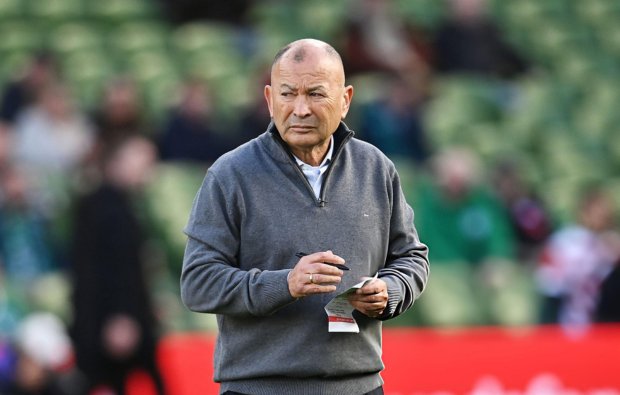Pieter-Steph | The Journey Of The Springbok Hardman Who Just Won't Give In
- 6375

Gentle, soft-spoken and humble off the field, relentless, combative and passionate between the four white lines – Pieter-Steph du Toit is truly one of the modern game’s Jeckyll & Hyde characters.
It was after Round 5 – and a shock Stormers defeat to the Blues - that the news filtered through the channels that summoned groans from rugby fans from all corners of South Africa; that the incumbent Springbok number 7 was to be sidelined, a feeling which he has had to grapple with on several occasions in his career.
Du Toit cultivated his love for the game of rugby on the hard turf of the Boland in the Western Cape, in a small farming town called Riebeek-Kasteel. Springbok blood flowed through his veins long before he first donned the green & gold, however, as his grandfather, Piet “Spiere” [muscles] du Toit had played prop for South Africa in the early 1960s and, as his nickname suggests, was renowned for his physical strength.
“My grandfather was a Springbok, and as far back as I can remember, I always wanted to become a Springbok,” the 2m, 120kg forward said, “When I started watching rugby... and the Springboks...the badge, and everything in the badge, was something I wanted to become.”
Pieter-Steph first tasted disappointment when, in 2013, he was picked in the Springbok squad for the June Test series against Italy, Scotland and Somoa, only to be forced to withdraw owing to a fractured sternum.
While it was a bitter pill to swallow, his dream finally materialised on 9 November 2013 at the Millennium Stadium in Wales.
“I remember running onto the field. Some people say they’re so emotional, but I was just so happy. It was something I never thought would come true with my injuries in the past and the small place I came from.”
The joy at having earned his first Springbok cap would have been tempered somewhat had he known how significant a theme injury would be throughout his career.
During pre-season training with the Sharks, as 2013 drew to a close, Du Toit suffered a knee injury which put him out for eleven long months.
Then, having recovered, and eager to make up for a 2014 season that wasn’t, in a Super Rugby derby against the Cheetahs in Bloemfontein, Du Toit’s studs held fast in the turf as his body turned, rupturing the very same knee.
“I was going to miss the World Cup. They told me my ACL was off again.”
With one fall to the ground, Du Toit was mercilessly thrown back to the miserable space of 2013/2014 – more than a year of hard work and rehab down the drain - and staring, once again, down a dark barrel of eleven months on the sidelines.
It was this event, however, which brought about one of the most touching human-interest stories of the modern rugby era.
Du Toit and his father sat in the office of a medical professional and were advised that, in order for them to surgically repair his injury, they would need to wait three weeks for ligament tissue to arrive from overseas, to which Du Toit senior replied: “Well, why don’t you just use mine?”
The surgery was completed the very next day, his father’s sacrifice ultimately making Pieter-Steph’s World Cup dream come true.
Since then, Du Toit has not had to contend with any major injuries, only the kind of general niggles associated with his profession. And has thrived picking up Three SA Rugby Player of the Year Awards, becoming just the third player to win it three times, and won the World Rugby Player of the Year Award after the Springboks' triumph at the Rugby World Cup.
All this after he proved Rassie Erasmus wrong who wrote in a column for SA Rugby Magazine: "I got it totally wrong with Pieter-Steph du Toit. I had never worked with him or coached him before 2018, so all I had to rely on was my gut instinct when assessing his play. I thought he was physical in the Springboks’ 25-24 defeat against the All Blacks at Newlands in 2017. But I also thought he was poor defensively, missed a lot of tackles and ran too upright as a ball-carrier. I watched that Test and at the time thought I wouldn’t pick him to start for the Springboks."
Now, however, after the Blues encounter, he faces three months of recovery and dodged a proverbial bullet which very nearly cost him not only his career but his leg.
“He had a haematoma that developed into an acute compartment syndrome. It's incredibly rare - there have been only 43 (cases) listed in the literature (worldwide)," Stormers' team doctor Jason Suter said, "Within 15 minutes of him coming off the field and assessing him, we realised that he was at risk of this particular rare condition. He was taken straight to hospital where he had a vascular surgeon waiting and he was operated on that night.
It's very unusual, very rare but they had to cut through the muscle to release the pressure and they were only able to close that leg 10 days after his initial injury."
Thus, Du Toit now finds himself back in the saddle again, so to speak, albeit not his first rodeo.
Injury in sport has always been a test of character, a doldrum of uncertainty and frustration where negativity may flourish and progress may find itself hampered.
However, the tenacity and determination with which he has become associated- owing in no small way to his value-strong upbringing – nourish the notion that his body, no matter how bruised and battered in the past, will once again be fit and eager to serve the Springbok jersey for many years to come.
















